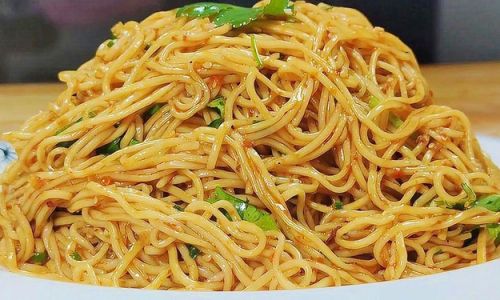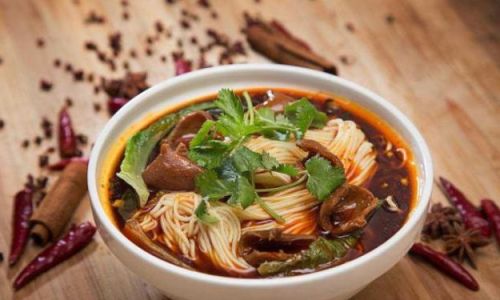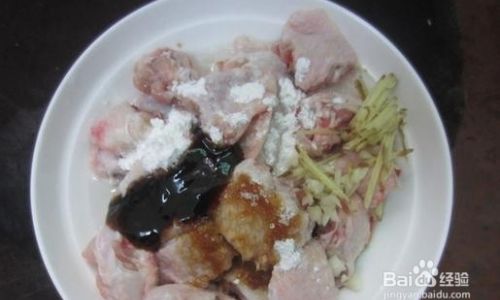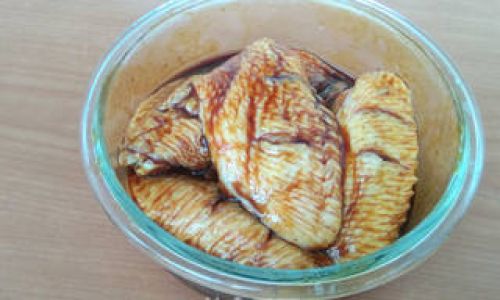Introduction
Chongqing noodles, a culinary gem hailing from the vibrant city of Chongqing in southwestern China, are renowned for their fiery spice, rich flavors, and satisfying texture. These noodles, often served in a broth teeming with chili oil, numbing Sichuan peppercorns, and a myriad of other spices, are a testament to the region’s culinary prowess. While the traditional recipe might seem intimidating to those unfamiliar with Sichuan cuisine, with the right techniques and ingredients, anyone can create delicious and aromatic Chongqing noodles at home. This guide will walk you through the step-by-step process, ensuring your noodles are not only tasty but also burst with the authentic flavors of Chongqing.
Understanding the Basics
Before diving into the recipe, it’s crucial to understand the fundamental elements that make Chongqing noodles unique. The noodles themselves are typically made from wheat flour and are either hand-pulled or machine-cut, giving them a chewy, al dente texture. The broth, a blend of pork or chicken bone broth, is seasoned with soy sauce, vinegar, garlic, and ginger, creating a balanced base for the fiery chili oil and other spices. The chili oil, a key ingredient, is infused with red chili flakes, Sichuan peppercorns, and aromatics like garlic and ginger, giving it a complex, layered flavor.
Ingredients and Tools

To make authentic Chongqing noodles, you’ll need the following ingredients:
- Fresh or dried wheat noodles (preferably hand-pulled or thick-cut)
- Pork or chicken bone broth
- Soy sauce
- Chinese rice vinegar or black vinegar
- Garlic, finely minced
- Ginger, finely sliced or julienned
- Green onions, chopped
- Chili flakes (preferably Sichuan-style)
- Sichuan peppercorns
- Neutral oil (like vegetable or canola oil) for making chili oil
- Pork shoulder or belly, thinly sliced (optional for meat toppings)
- Bean sprouts, blanched (optional)
- Peanut butter or sesame paste (optional for added creaminess)
- Fresh vegetables like bok choy or spinach (optional)
Tools you’ll need:
- Large pot for boiling noodles and making broth
- Small pot for making chili oil
- Strainer
- Ladle
- Chopping board and knife
- Mixing bowls
- Slotted spoon
Step-by-Step Recipe
Prepare the Noodles
If using fresh noodles, skip to step 2. For dried noodles, bring a large pot of water to a rolling boil. Add a tablespoon of salt to the water to enhance the flavor of the noodles. Cook the noodles according to package instructions until al dente. Once cooked, drain the noodles using a strainer and rinse them under cold water to stop the cooking process. Set aside.
Make the Chili Oil
In a small pot, heat a generous amount of neutral oil over medium heat. Add a handful of chili flakes, a teaspoon of Sichuan peppercorns, a few cloves of garlic, and a slice of ginger. Cook, stirring occasionally, until the oil turns a deep red and the aromatics are fragrant (about 5 minutes). Be careful not to burn the chili flakes, as this will make the oil bitter. Remove from heat and let it cool slightly. Strain out the solids using a fine-mesh strainer, reserving the chili oil.

Prepare the Broth
In a large pot, bring pork or chicken bone broth to a simmer. Add a few slices of ginger, a couple of cloves of garlic, and a tablespoon of soy sauce. Let it simmer for about 15-20 minutes to allow the flavors to meld. Taste and adjust seasoning with additional soy sauce, vinegar, salt, and pepper if needed.
Prepare Toppings and Garnishes
While the broth is simmering, prepare your toppings and garnishes. Thinly slice pork shoulder or belly and cook it in a separate pan until browned and crispy. Blanch bean sprouts and fresh vegetables if using. Chop green onions and set aside.
Assemble the Noodles
In a large mixing bowl or individual serving bowls, place a portion of cooked noodles. Ladle hot broth over the noodles, ensuring they are fully submerged. Add a teaspoon or two of chili oil, depending on your preference for spiciness. Sprinkle with minced garlic, sliced ginger, and chopped green onions. Top with cooked pork, bean sprouts, and fresh vegetables if desired.
For an added layer of flavor, you can drizzle a small amount of peanut butter or sesame paste into the broth before adding it to the noodles. This will add a creamy, nutty texture that complements the spicy, savory broth.

Serve and Enjoy
Serve your Chongqing noodles hot, with extra chili oil, soy sauce, and vinegar on the side for diners to adjust the flavors to their liking. Encourage your guests to mix everything well before eating to ensure every bite is packed with flavor.
Tips for Perfecting Your Chongqing Noodles
- Quality Ingredients: Use high-quality ingredients, especially for the broth and chili oil, as they make a significant difference in taste.
- Balance of Flavors: Chongqing noodles are known for their balance of spicy, savory, and slightly sweet flavors. Adjust the seasoning to your preference, but remember that the chili oil should be the star.
- Texture: The noodles should be chewy and al dente. Avoid overcooking them, as this will make them mushy.
- Garnishes: Don’t skip the garnishes! They add color, texture, and additional flavors to your noodles.
- Experimentation: Feel free to experiment with different toppings and garnishes. Chongqing noodles are versatile and can accommodate various ingredients.
Conclusion
Making delicious and aromatic Chongqing noodles at home may seem like a daunting task, but with the right ingredients, tools, and techniques, you can achieve restaurant-quality results in your own kitchen. Remember, the key to perfect Chongqing noodles lies in the balance of flavors and the quality of your ingredients. Happy cooking, and enjoy the fiery, savory delights of Chongqing cuisine!






0 comments